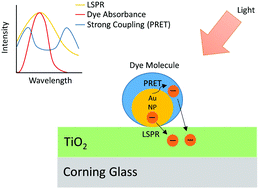Plexcitonics – fundamental principles and optoelectronic applications
Abstract
The nanoscale confinement and coupling of electromagnetic radiation into plexcitonic modes has drawn immense interest because of the innovative possibilities for their application in light harvesting and light emitting devices (LEDs). Plexcitons arise from the coupling between two types of quasiparticles, plasmons and excitons, and can be distinguished by the strength of the coupling into strong and weak coupling regimes. Plexcitons have been used to modulate the rate of Förster-type resonance energy transfer in quantum dot assemblies and enhance the spontaneous emission rate in quantum dot LEDs. The clearest examples of a plexcitonic enhancement of photocatalytic reaction rates have been evidenced in hybrid systems wherein the strongly bound exciton found in 2D sheet-like semiconductors is coupled to the surface plasmon resonance of close-lying noble metal nanoparticles. Plexcitonic photocatalysts and solar cells aim to increase the lifetime of hot carriers and thereby enhance the quantum yields for energy harvesting. Since plexcitonics requires the placement of plasmonic and excitonic components in close proximity with one another to facilitate their coupling, it provides a rich arena for chemists and materials scientists to form deterministic and non-deterministic arrays and heterojunctions involving noble metal thin films and nanostructures, quantum dots and dye molecules. This review summarizes the dynamics of plexcitons in the various composite systems and provides an overview of the latest theoretical and experimental developments in the field of plexcitonics.

- This article is part of the themed collection: Recent Review Articles


 Please wait while we load your content...
Please wait while we load your content...